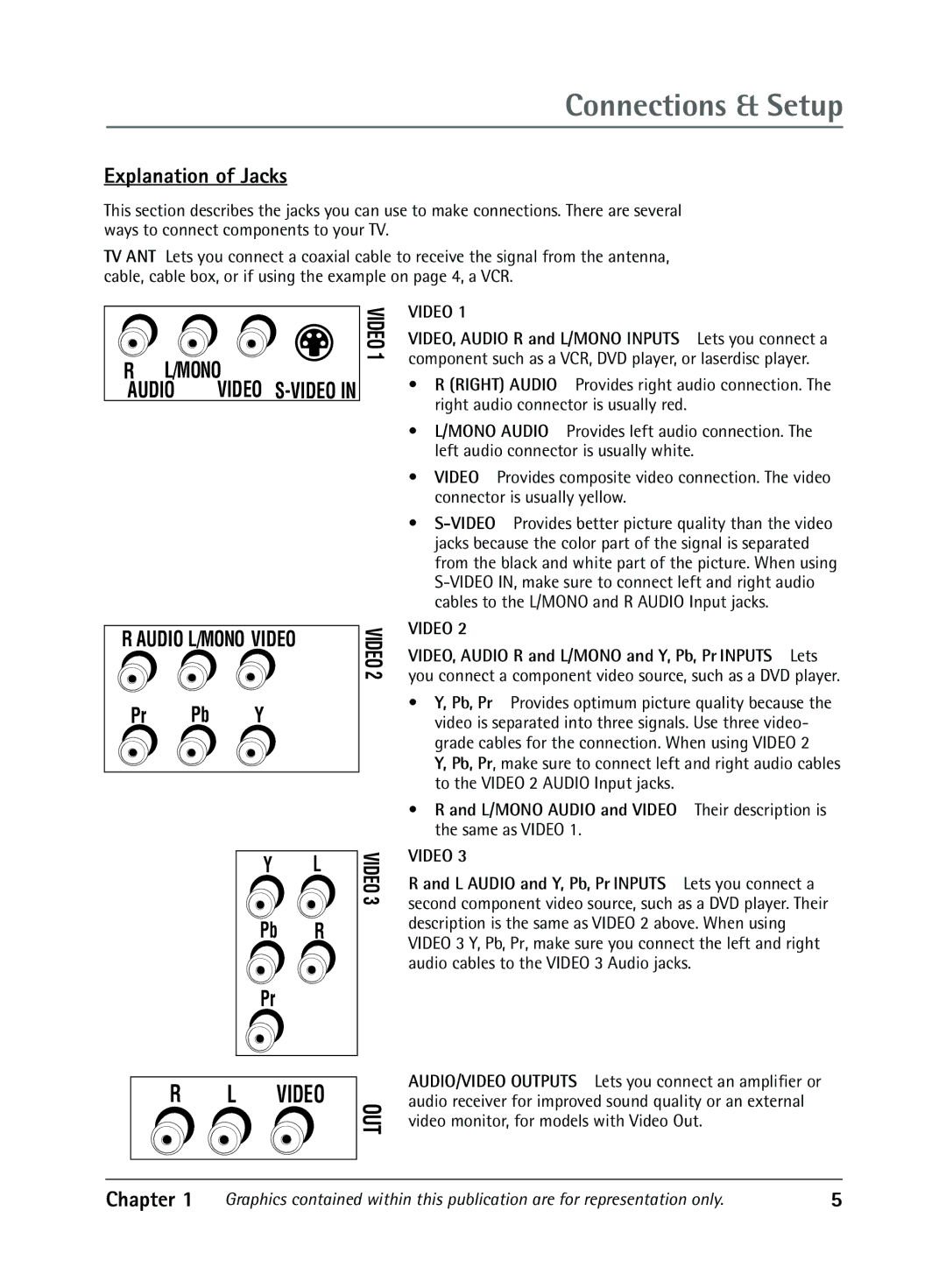
Connections & Setup
Explanation of Jacks
This section describes the jacks you can use to make connections. There are several ways to connect components to your TV.
TV ANT Lets you connect a coaxial cable to receive the signal from the antenna, cable, cable box, or if using the example on page 4, a VCR.
R | L/MONO | |
AUDIO | VIDEO | |
R AUDIO L/MONO VIDEO
Pr Pb Y
VIDEO 1
VIDEO 2
VIDEO 1
VIDEO, AUDIO R and L/MONO INPUTS Lets you connect a component such as a VCR, DVD player, or laserdisc player.
¥R (RIGHT) AUDIO Provides right audio connection. The right audio connector is usually red.
¥L/MONO AUDIO Provides left audio connection. The left audio connector is usually white.
¥VIDEO Provides composite video connection. The video connector is usually yellow.
¥
VIDEO 2
VIDEO, AUDIO R and L/MONO and Y, Pb, Pr INPUTS Lets you connect a component video source, such as a DVD player.
¥Y, Pb, Pr Provides optimum picture quality because the video is separated into three signals. Use three video- grade cables for the connection. When using VIDEO 2
Y, Pb, Pr, make sure to connect left and right audio cables to the VIDEO 2 AUDIO Input jacks.
YL
Pb R
Pr
VIDEO 3
¥ R and L/MONO AUDIO and VIDEO Their description is the same as VIDEO 1.
VIDEO 3
R and L AUDIO and Y, Pb, Pr INPUTS Lets you connect a second component video source, such as a DVD player. Their description is the same as VIDEO 2 above. When using VIDEO 3 Y, Pb, Pr, make sure you connect the left and right audio cables to the VIDEO 3 Audio jacks.
R L VIDEO
OUT
AUDIO/VIDEO OUTPUTS Lets you connect an amplifier or audio receiver for improved sound quality or an external video monitor, for models with Video Out.
Chapter 1 | Graphics contained within this publication are for representation only. | 5 |
